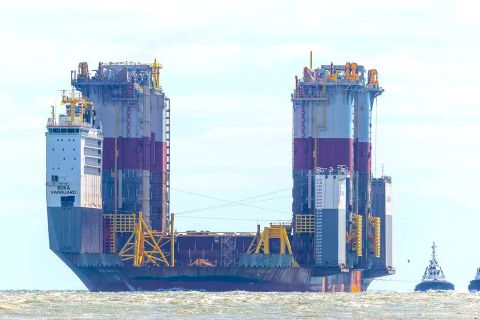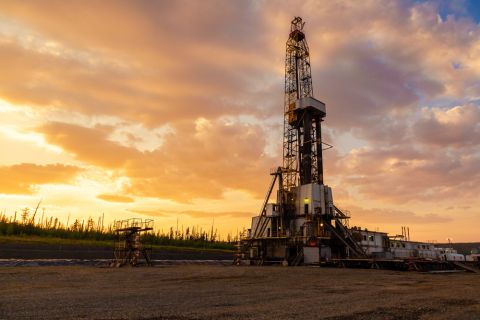The oil and gas industry has made enormous strides in developing technology on many levels and continues to invest enormous sums in R&D. One of the criticisms of the industry, however (besides the obvious one of how long it takes new technologies to be adopted and put into use), is that it rarely adopts or adapts technologies that are being applied in other disciplines. Technology transfer from other industries could help engineers in the oil and gas industry answer many of today’s biggest challenges. Exploring the potential of medical technology to address oil and gas issues was at the heart of the Pumps & Pipes III conference in Houston, which was held the first week of December. Scientists and engineers from two of the nation’s largest industries – medicine and energy – joined leading academicians to explore the synergies in moving oil and pumping blood. Sponsored by ExxonMobil, the Methodist DeBakey Heart & Vascular Center, and University of Houston, the Pumps & Pipes III provided a forum for sharing new technologies and pursuing discussion that participants hoped would spark ideas among experts in the petroleum, medical, and imaging industries that face similar technical challenges. “Today, engineers are talking to medical researchers about using nanoparticles to sort stem cells,” said Alan Lumsden, M.D., co-director of Pumps & Pipes, medical director of the Methodist DeBakey Heart & Vascular Center and chair of the department of cardiovascular surgery at The Methodist Hospital. “An engineer who specializes in cleaning oil spills thought of it during a discussion at the last Pumps & Pipes conference. It’s amazing the ideas that flow when energy and medicine experts get together. The interaction sparks ideas that would never have materialized if we stayed in the medical center and they stayed in the oil field.” The conference featured speakers in the morning sessions from medicine, energy, and academia, who discussed the use of advanced nanotechnology, robotics, and remote monitoring in common issues like pipeline corrosion and blood vessel integrity. The afternoon sessions featured discussions on pipes and fluids, a concept that spawned joint oil and medicine ideas in the past when Methodist researchers looking at preventing aneurysms gained a new perspective of blood flow dynamics from pipeline engineers who used fluid dynamics to predict pipeline ruptures. Talks focused on managing imperfect pipes, next-generation intelligent conduits, and advanced materials for energy and medicine. The presentations offered participants a common language as well as a platform from which to discuss the hurdles facing each discipline. “Collaboration with the medical and oil industry is an essential component of solving complex interdisciplinary challenges,” said Ioannis Kakadiaris, Ph.D., co-director of Pumps & Pipes and Eckhard Pfeiffer Professor of Computer Science at the University of Houston (UH). “The Pumps & Pipes initiative brings industry and academia together in a unique way, leveraging UH’s research strengths in areas such as biomedical image computing, computer-assisted intention, and nanomaterials, and allows innovators to share ideas and develop solutions.” According to William E. Kline, PhD, co-director of Pumps & Pipes, ExxonMobil Upstream Research Co., “This year’s Better Together theme follows The Other Guy’s Toolkit theme of Pumps & Pipes II. By imagining together, we bring together the power of countless years of innovation.” So far, it looks as if participants are on the right track. And certainly, this sort of collaboration is something that has enormous potential for all of the parties involved.
Recommended Reading
URTeC: E&Ps Tap Refrac Playbook for Eagle Ford, Bakken Inventory
2024-06-17 - Refracs and other redevelopment projects might not be needle-moving growth drivers—but they’re becoming more common for E&Ps levered in maturing plays like the Eagle Ford and Bakken, experts discussed at URTeC 2024.
Chevron, Total’s Anchor Up and (Almost) Running
2024-05-07 - During the Offshore Technology Conference 2024, project managers for Chevron’s Anchor Deepwater Project discussed the progress the project has made on its journey to reach first oil by mid-2024.
Blankenship, Regens: More Demand, More M&A, More Regs
2024-05-23 - In 2024, the oil and gas industry is dealing with higher interest rates, armed conflicts in Europe and the Middle East, rising material costs, a decrease in Tier 1 acreage and new policies and laws.
Exxon Mobil Keeps Its Options Open in Guyana and Globally
2024-05-23 - Exxon Mobil Guyana Ltd.’s President Alistair Routledge said the company is seeking resources offshore Guyana that compete financially within its portfolio.
CNOOC’s Bohai Bay Well Achieves High Yield
2024-07-11 - CNOOC’s Bozhong 19-6 Condensate Gas Field D1 well, the first ultra-deep well in China’s Bohai Bay, is currently producing approximately 6,300 boe/d.





